Life Science Analytics and Market Sizing
In this post, we’ll look to establish the basis (on what is a highly complex practice) of life science market sizing via some data points and analytics.
We determine life science markets by size and potential to gain a detailed understanding of the opportunities and risks prior to a new campaign.
These are some of the factors that can limit either your addressable market or the potential market share in the life science sectors we operate within. Such factors might include diagnosis rates, treatment rates, prescription vs. over-the-counter or even competitor's patent TV ad limitations.
A whole range of other factors will be at play during this market sizing task. We will talk you through some of the basics, as well as some tips for how to conduct the process as well as what to look for during the investigation.
Subscribe for marketing insights via email
ENSURING A METHODICAL PROCESS
For any market sizing task, whether this is for a new product launch or a new strategic initiative, it is always recommended that you follow a methodological process with defined boundaries.
STRUCTURE THE APPROACH
Set yourself up to succeed at the task from the very beginning. Structuring your approach to the task - beginning with organising the key information and data points - will ensure that the preparation is adequate, as well as the data processing during. Break down the market into several components and work through each individually so that the task does not become overwhelming. Talk yourself through the process (out loud) to see if your approach makes sense and write down the specific steps you will/are taking. If we’re looking at the entire population of a country, in the life sciences, it makes sense to structure the data into different age groups.
LOOK CLOSELY AT THE NUMBERS - WE ARE ONLY ESTIMATING
Diving into your numbers and key information, as well as your analytics, is a daunting task, at least at first. The market sizing task will always be an estimation, therefore, the numbers should be treated similarly. You will be working with a lot of (large) numbers, so consider rounding up those numbers so you can work quickly with your figures and percentages. Always remember: estimations are the goal and round up everything into workable numbers that can be interpreted with ease. Using the above example, once we have our age groups we may want to estimate the number of practice/pharmacy visits per year, per age group to a single figure or perhaps limit the decimals to one.
DO A SANITY CHECK
Again, another simple task but one that is often overlooked due to its simplicity and the intricate nature of the market sizing task. You’re working with data and analytics and then combining those to determine your estimations - this can get overwhelming so double-check everything. Even spend some time away from your screen before resuming with the task and consider a second pair of eyes to look over what you have thus far. Back to the above example, we now know of the estimated number of practice/pharmacy visits so we can then look to determine the average consumption per visit per age group.
REVIEW
As you go through the market sizing exercise (which we will review in the next section) you will more than likely be repeating this methodical process. But be sure to approach each case differently. Even after setting out an approach you will still encounter some issues which will need to be resolved. Therefore, always review to determine whether you are working efficiently. You are reviewing assumptions and calculations, as well as your market segments, and if one variable is out of place then your sizing task is flawed and inaccurate. Finally, should we determine the average consumption per age group, we can determine market size for that age group, as well as the total monetary market size. But be sure to review this with other sources. Going back to the beginning and starting again might not be a bad idea.
MARKET POTENTIAL AND SIZE
At this stage, we are looking to gather an estimate of the current size of the market, as well as estimate the future size of the market to understand its potential.
UNDERSTANDING WHAT WE ARE SIZING
To do this, I would look to fully understand what market you are looking to understand and scrutinise. It’s no use defining the market as simply the “life science” as the market is simply too broad and generic. If you are a B2B or B2C pharmaceutical company this will always be the case. Define the specific product or service offering which you are looking to get an understanding of and identify its category - as you are likely doing this for your own organisation, this should be relatively simple. Should your organisation have multiple product offerings, you are likely to identify several markets. Organisational data will provide data on drug turnover and data on drug consumption can be provided by ATC groups in the life sciences.
GEOGRAPHIC AREA OF THE MARKET
When estimating the size of a market, after defining the market types, we are required to understand the geographical regions of the market. As different products and services can be interpreted and received - with marketing and costs reacted to - differently by regions, a market should be sized accordingly. So, define the perimeters of your given market - your market will commonly fall into regional national or local, or maybe even global, markets. Segmenting the areas is always good practice as behaviours effecting spend are always different in each segment.
FREQUENCY AND PERIOD
An estimation of a market can quite simply go on forever. If there are no boundaries to the period of the sizing exercise, the market size might be completely wrong as the customers and organisations within would be assessed disproportionately. Define the frequency of the sizing period. This might be monthly, annual or every 5 years. Then define the period that you will conduct your analysis, which again might be for a particular year or for the last 5 years.
SIZING METHODOLOGY
Now to the nitty-gritty. There are a number of ways of diving deep in the life science markets via organisational data, databases and other data analysis methods and here’s a brief overview of your options. Commonly you will look to define a market via turnover, consumption and products/services (similarly to the example in the first section), but a supply chain analysis - which will be more appropriate to the readers of this blog - might include looking at life science markets in terms of its wholesales or retail market. Be sure to consider all of the variables - such as non-medicines and internal trade as well as the import/export and wholesale/resale market - that affect net sales in your analysis. In the life sciences, you might look at OTC drugs or generics, or you might even look via industry such as retail or hospitality.
LIFE SCIENCE MARKET ANALYSIS
The process generally starts with some primary market research gain data on potential use, penetration, price sensitivity of the product and its relative value compared to main current and future competitors. This is followed by an epidemiology-based, detailed forecasting across several markets that were impacted by key competitive, pricing and regulatory events. Should you be embarking on this task yourself, we would highly recommend you approach a third part organisation to aid the process. We are happy to recommend organisations to you if this is the case.


